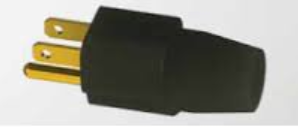chrisski
Solar Boondocker
- Joined
- Aug 14, 2020
- Messages
- 5,186
I did level 1 charging with my Tesla model 3 with my solar setup, and these are the results:
4.33 miles / hour charged
322 wh/mile from the ac inverter
367 wh/mile from the Batteries to cover AC losses
AC draw from inverter while charging 1400 watts +/-2watts.
AC Draw from inverter before charging 0 watts
Drove 28.2 miles
AC 9.1 kWh used (This accounts for wattage from the inverter only, not DC to AC conversion loses)
DC 10.289 kWh used to cover AC to dc conversion losses. Turns out my inverter is 87% efficient
6.5 hours to charge
Idle Draw of Tesla when it plugged in for charging and sentry mode on=200 watts. This added up over the 10 hours the car was unplugged at 100% before i went to work and when I left after that time, it was 97%
The numbers above were measured using a Victron Shunt for the DC readings, and the AC readings were by the Samlex 3000 watt 24 volt inverter.
=====================
The tesla app on the car and the phone gave me some numbers that don’t quite match up to above. The tesla app showed 204 wH per mile and an 8 kWh charging session.
So, after a little reading on the Tesla boards, the batteries are supposedly heated when the car is charged, and the guess is its 500 watts of power. It seems that tesla is not counting the energy to run the battery heater in the aps display of 204 Wh/mile. If the heater is 500 watts, about 900 watts goes into charging, so the proportion is close enough. The numbers I got off the Tesla boards for actual watt hours per mile was 320 WH/mile, so close to what I had, but again not matching the Tesla display.
The other thing the Tesla software may no count is the idle draw. So, the watt hours per hour is a little misleading. If I drove 10 miles and only looked at the Tesla app charge stats, I would think the charge session would cost $.56 if I charged it off the grid at $.17 per kWh. The actual cost would be $.84.
The Tesla app was also a little inaccurate on kWh used. I used 9.1 kWh for my 28.2 mile drive, when the app displayed 8 kWh. I trust my shunt more than the tesla app.
After all this, I saved 9.1 kWh of grid power on the 28.2 mile drive, or $1.55. I can almost get a small pack of M&Ms that I like with the money I saved, but not the coke or chips to go with it.
4.33 miles / hour charged
322 wh/mile from the ac inverter
367 wh/mile from the Batteries to cover AC losses
AC draw from inverter while charging 1400 watts +/-2watts.
AC Draw from inverter before charging 0 watts
Drove 28.2 miles
AC 9.1 kWh used (This accounts for wattage from the inverter only, not DC to AC conversion loses)
DC 10.289 kWh used to cover AC to dc conversion losses. Turns out my inverter is 87% efficient
6.5 hours to charge
Idle Draw of Tesla when it plugged in for charging and sentry mode on=200 watts. This added up over the 10 hours the car was unplugged at 100% before i went to work and when I left after that time, it was 97%
The numbers above were measured using a Victron Shunt for the DC readings, and the AC readings were by the Samlex 3000 watt 24 volt inverter.
=====================
The tesla app on the car and the phone gave me some numbers that don’t quite match up to above. The tesla app showed 204 wH per mile and an 8 kWh charging session.
So, after a little reading on the Tesla boards, the batteries are supposedly heated when the car is charged, and the guess is its 500 watts of power. It seems that tesla is not counting the energy to run the battery heater in the aps display of 204 Wh/mile. If the heater is 500 watts, about 900 watts goes into charging, so the proportion is close enough. The numbers I got off the Tesla boards for actual watt hours per mile was 320 WH/mile, so close to what I had, but again not matching the Tesla display.
The other thing the Tesla software may no count is the idle draw. So, the watt hours per hour is a little misleading. If I drove 10 miles and only looked at the Tesla app charge stats, I would think the charge session would cost $.56 if I charged it off the grid at $.17 per kWh. The actual cost would be $.84.
The Tesla app was also a little inaccurate on kWh used. I used 9.1 kWh for my 28.2 mile drive, when the app displayed 8 kWh. I trust my shunt more than the tesla app.
After all this, I saved 9.1 kWh of grid power on the 28.2 mile drive, or $1.55. I can almost get a small pack of M&Ms that I like with the money I saved, but not the coke or chips to go with it.



